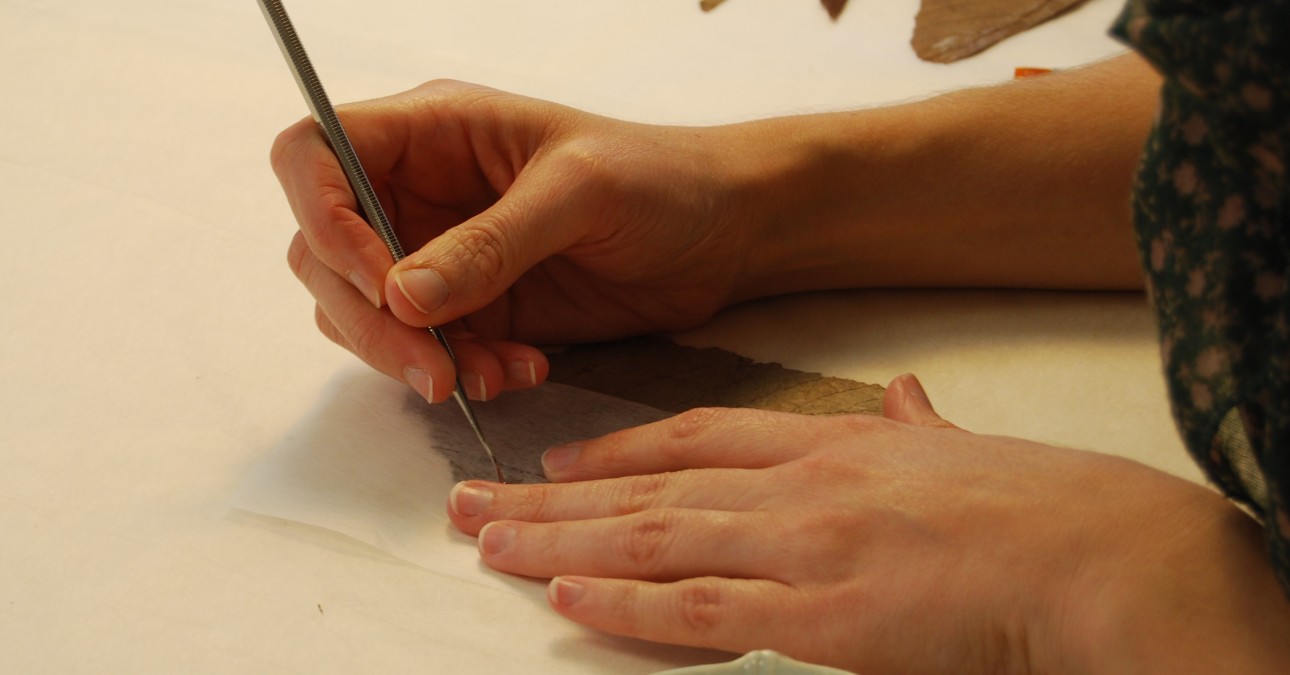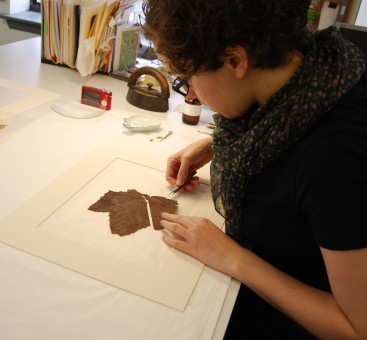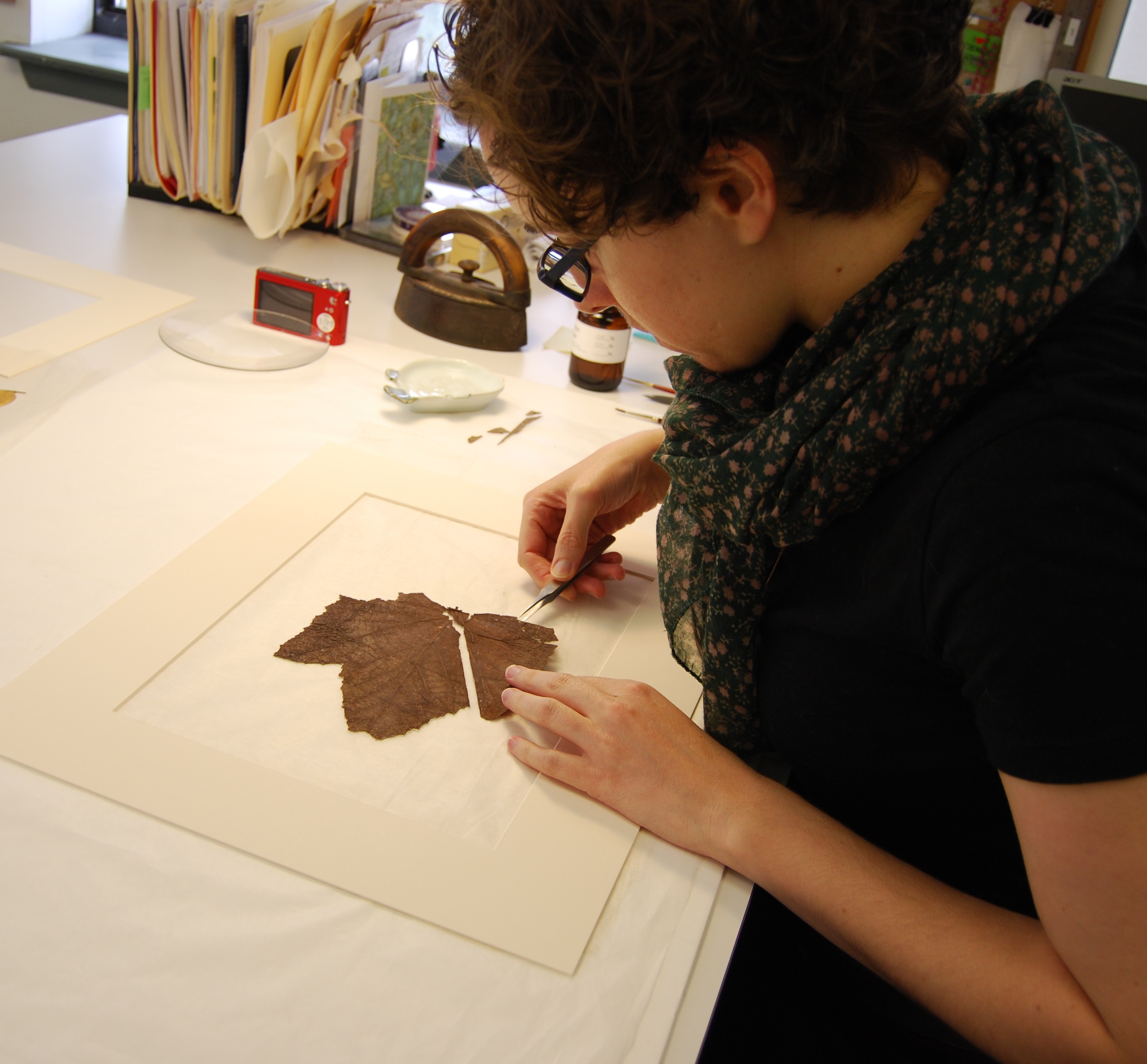
Treatment FOCUS: Creating a New Way to Display Leaves
William Heinrich Prestele was born in Germany in 1838 and raised in Iowa. He was the son of a prolific botanical illustrator, Franz Joseph Martin Prestele, whose influence on his son was clear from an early age. After completing several natural painting projects in his twenties, William Heinrich Prestele was appointed the first ever staff artist of the Pomological Division of the United States Department of Agriculture in 1887. The Division of Pomology was a newly-formed group focused on fruit breeding. The department was formed in response to the rising number of American farmers growing fruit and the increase in horticultural experimental breeding.
As the Division’s staff artist, Prestele was charged with painting watercolors of grape leaves, stems, and seeds for a monograph by the foremost expert on native grapes at the time, a man named Thomas Volney Munson. Over a period of several years, Munson conducted fieldwork in Texas and sent Prestele numerous materials for these illustrations, from live specimens to photographs. Although budgetary restraints prevented the monograph from making it to publication, Prestele’s life-size watercolors and many of the materials he worked from are in the collections of the National Agricultural Library to this day, and continue to serve as historical and botanical resources.
Conserving organic material always poses a challenge, but Paper & Photograph Conservator Jessica Keister was faced with a unique opportunity when the National Agricultural Library came to CCAHA wanting to conserve sixteen grape leaf specimens from the late nineteenth century—the leaves that Prestele worked from. While there are many precedents for conserving leaves, the majority address the type of conservation needed for future scientific uses. The National Agricultural Library, on the other hand, wanted to display the leaves side-by-side with the illustrations as pieces of historic art.
First, Keister relaxed any folds or creases in the leaves by locally humidifying them with a water/ethanol solution and a fine brush. Next, she painstakingly realigned the leaf fragments with tweezers. The leaves and vines were then lined with lightweight toned tengugo mulberry paper and wheat starch paste. The lining was secured to the backing board of a window mat with wheat starch paste. This reduced the potential for uneven local stresses to the specimens that would likely have been caused by typical paper-hinging methods.

Realigning leaf fragments.
